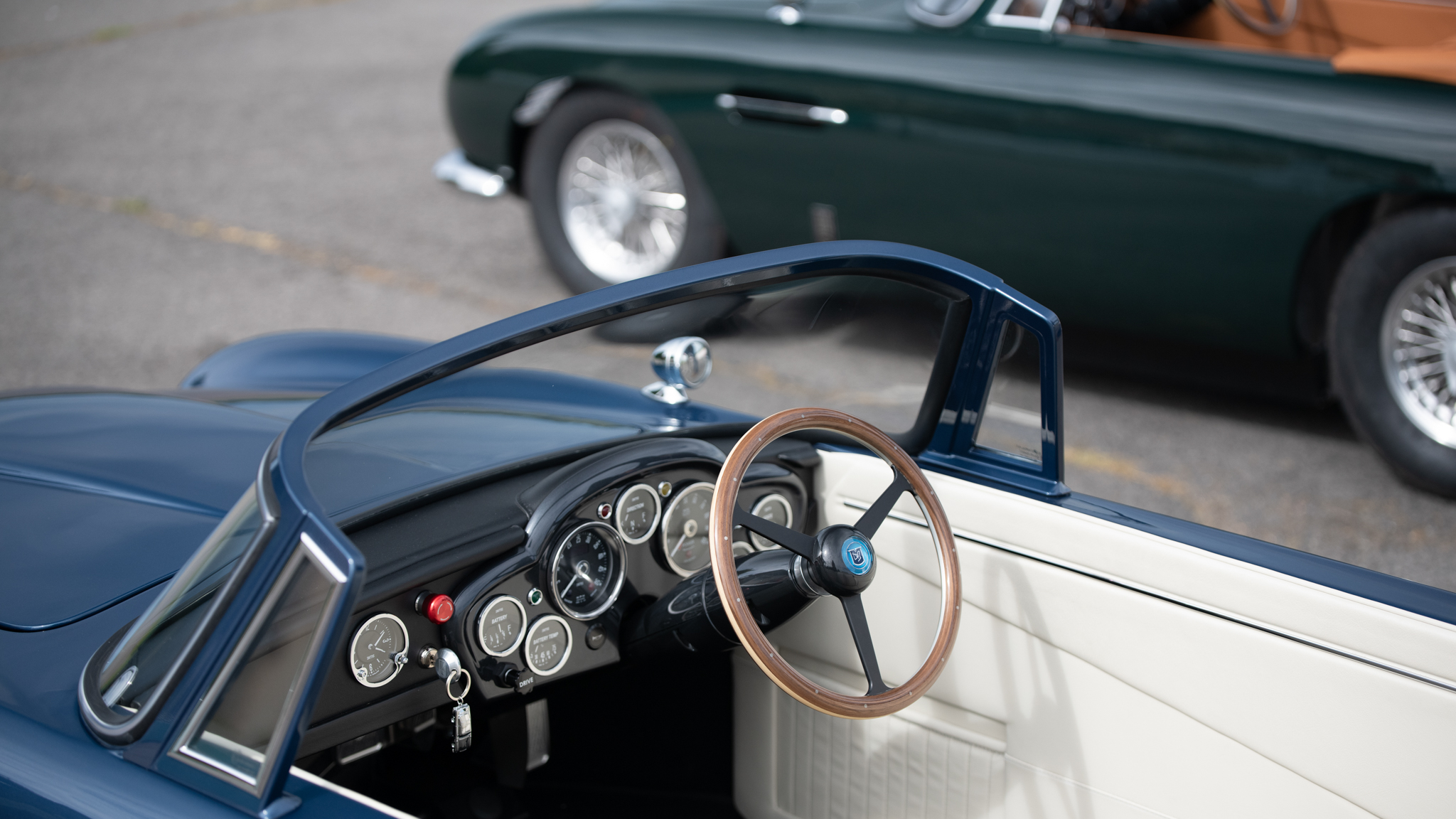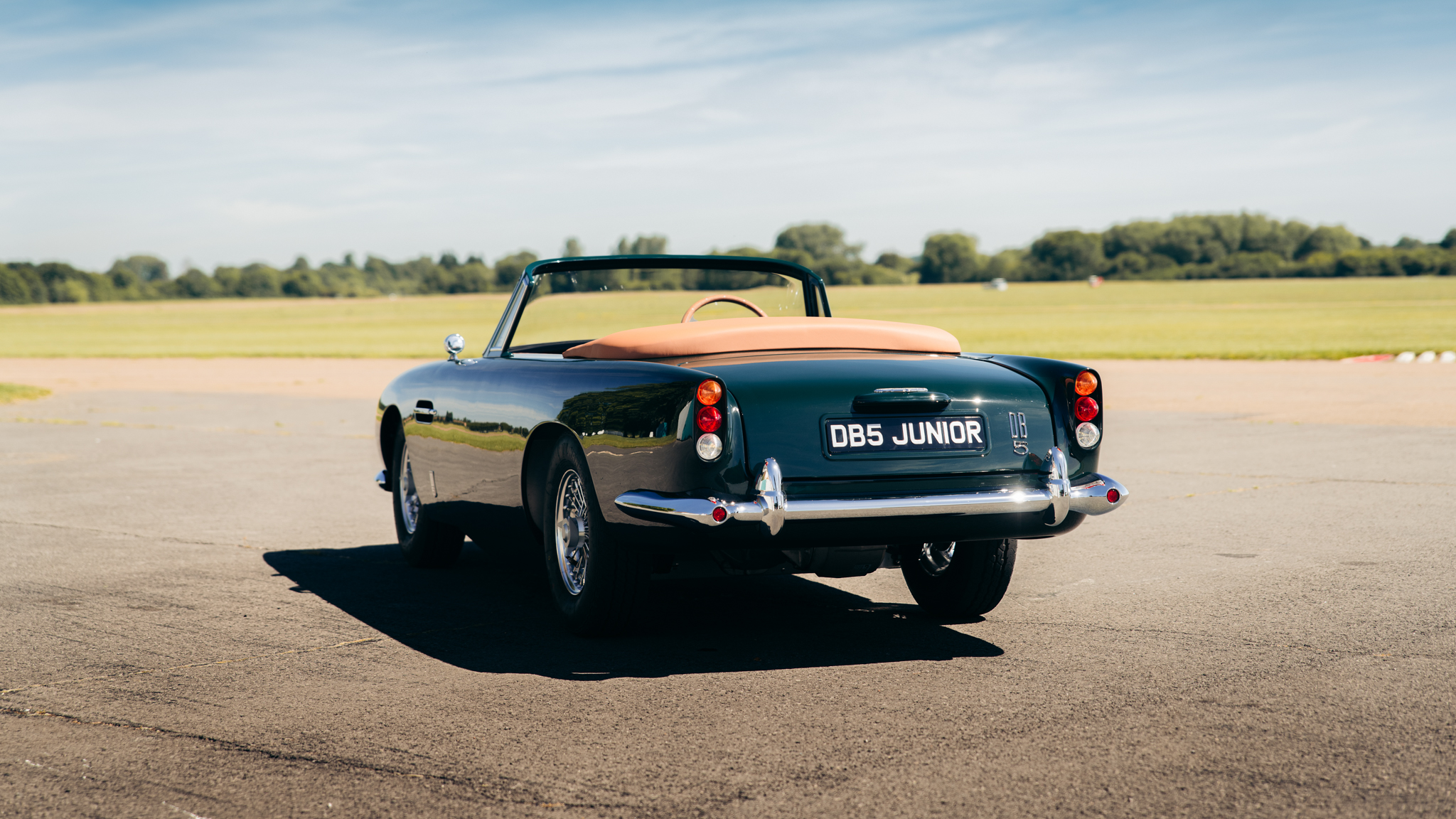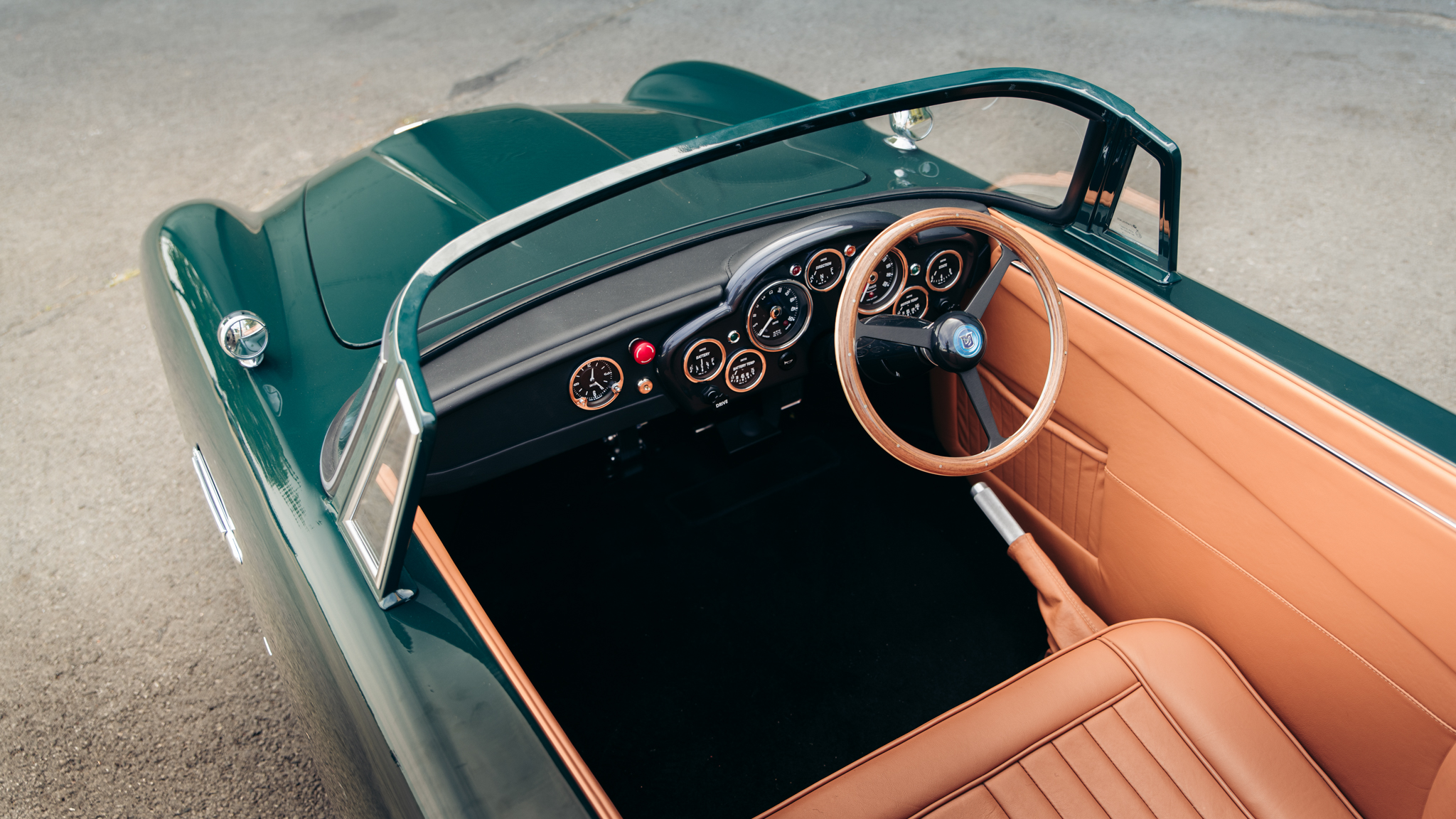The child-friendly Aston Martin DB5 Junior is anything but a toy
Driving the two-thirds-scale electric Junior is probably more fun than the real thing. Just don’t tell Bond.


When it comes to building and selling small electric cars, The Little Car Company has struck gold. Not be eking out hundreds of miles of range, or by shattering Tesla speed records. Instead, this Bicester-based startup has found a hungry and exceptionally wealthy market eager for scaled-down replicas of some of the world’s most iconic cars.
The company began with the Bugatti Baby II, then came the Ferrari Testa Rossa J, and now there is the car driven here, the Aston Martin DB5 Junior. You will notice that The Little Car Company’s name does not appear on any of them, as these are officially licensed vehicles, complete with chassis numbers and sign-off from each manufacturer’s chief test driver.
For all intents and purposes, this is an Aston Martin. It also has the seal of approval from the company’s test driver Darren Turner, and shares its paint and leather with full-scale Aston Martins.

Like the Baby II and Testa Ross J, the DB5 Junior is a thing of beauty. Measuring 3m long and 1.1m wide, it is 67% the size of the real thing, and was made using 3D scans of an original DB5. There will be up to 1,059 examples produced, to match the original, and DB5 owners are invited to buy a Junior with matching paint, leather and chassis number, if they so wish. Those thousand-or-so examples will be split between regular, Vantage and No Time To Die editions, with the latter featuring mini guns in the headlights, smoke screen, skid mode and changing digital number plates, as per James Bond’s latest ride.
Prices start at £35,000 plus taxes and shipping, rising to £45,000 for the Vantage and hitting £90,000 for the Bond special. There’s also an options list with different paint and leather combinations, plus accessories like spare batteries and covers for indoor and outdoor use.
From the wire wheels and chrome bumpers, to the carbon fibre body panels on the pricier Vantage model driven here (composite panels are fitted to the regular Junior), every detail is wonderfully executed. The interior features authentic Smiths dials like the original DB5, but repurposed to work with the car’s all-electric drivetrain.

In faster Vantage trim, maximum power is up from 5kW to 10kW (13.4bhp) and top speed is in the region of 45 mph when switched to the most potent driving mode. Lesser modes limit power and speed to make the car child-friendly, but The Little Car Company knows as well as you do, that a great many miles will be covered by adults too. That said, a 12 mph limiter in Novice mode and remote kill switch mean children 11 years and over can drive the DB5 Junior safely, and the interior is shaped so that an adult and child can sit alongside each other.
Get all the latest news, reviews, deals and buying guides on gorgeous tech, home and active products from the T3 experts
Having lowered myself into the cabin, my legs are almost straight out in front of me. This is not a toy to sit on, but a car to sit in. I can almost tuck beneath the windscreen as I take hold of the wooden and aluminium Nardi steering wheel, turn the key and rotate the gear selector to drive. The car accelerates briskly up to its speed limiter and the brakes, disc all round with Brembo callipers, are powerful, with a firm pedal inspiring confidence from the first press.
But it’s in the corners where the DB5 Junior excels. Somewhat unlike an original DB5, the pint-sized Aston has pin-sharp steering, tucking its nose into every corner of the compact Bicester Heritage test track.

I quickly learn how lifting off the accelerator or dabbing the brakes on corner entry will encourage the rear to break free into a small drift, while there’s just about enough power to maintain a slight angle, before corrective steering brings everything back into line.
That may sound like linguistic overkill for a car designed for drivers as young as 11, but I promise the DB5 Junior is worthy of the description. This is a sports car with properly sorted handling characteristics that can be explored, and take time to fully master.
To that end, the car has double wishbone suspension at the front, with geometry designed to replicate the original DB5. A live rear axle in the standard DB5 Junior also mimics the full-size Aston, but upgrade to Vantage spec and you get a limited-slip differential. The lack of body roll produces the sort of kart-like handling engineers of the Sixties could have only dreamt of.

At 5 '6, I can lower myself into the Aston without employing the removable steering wheel, while drivers six feet and over should still be able to get comfortable. The only ergonomic problem I had was with the top of the windscreen, which fell exactly in my line of sight, meaning I had to either hunker down slightly to look through the screen, or sit more upright (and in the buffeting wind) to see over it. Drive slowly (or put sunglasses or a helmet on) and all is well.
As with the Ferrari Testa Rossa J, the sense of quality here, along with the attention to detail, is extraordinary. They are very expensive, but driving a Little Car Company vehicle for just a few miles makes you realise this is so much more than a child's plaything. It's a real car, only a smaller one than you're used to.
What's equally impressive is how the DB5 Junior feels entirely different to The Little Car Company’s Bugatti and Ferrari offerings, with the former feeling much more like the bone-shaking 1920s racer on which it is based, and the latter being more refined but equally track-focused. By contrast, the Aston is a calmer and more comfortable experience, but one ready to tackle a race track (or your parents’ very long driveway) as well as cruise for miles on end.
It certainly isn’t cheap; you could buy a full-size Aston for the same price. But that hasn’t stopped TLCC attracting hundreds of customers, with some eager to order one of every model it sells.

Some are bought for parent-child playtime, others are used to get around sprawling country estates, navigate the golf course, and even shuttle owners to and from their private jet. Many sit proudly among collections of full-size cars, and one customer has a Bugatti Baby II hung on a wall. Because of course they do.
As for what’s next, the company has struck deals with more, as-yet-unnamed manufacturers, and is making good progress with its Tamiya buggy, which will essentially be a full-size, driveable version of the remote control Wild One Max. Small wonder TLCC has recently expanded into a second premises at Bicester Heritage, doubling its footprint and preparing to no longer be quite so little.
This article is part of The T3 Edit, a collaboration between T3 and Wallpaper* which explores the very best blends of design, craft, and technology. Wallpaper* magazine is the world’s leading authority on contemporary design and The T3 Edit is your essential guide to what’s new and what’s next.
Alistair is a freelance automotive and technology journalist. He has bylines on esteemed sites such as the BBC, Forbes, TechRadar, and of best of all, T3, where he covers topics ranging from classic cars and men's lifestyle, to smart home technology, phones, electric cars, autonomy, Swiss watches, and much more besides. He is an experienced journalist, writing news, features, interviews and product reviews. If that didn't make him busy enough, he is also the co-host of the AutoChat podcast.

